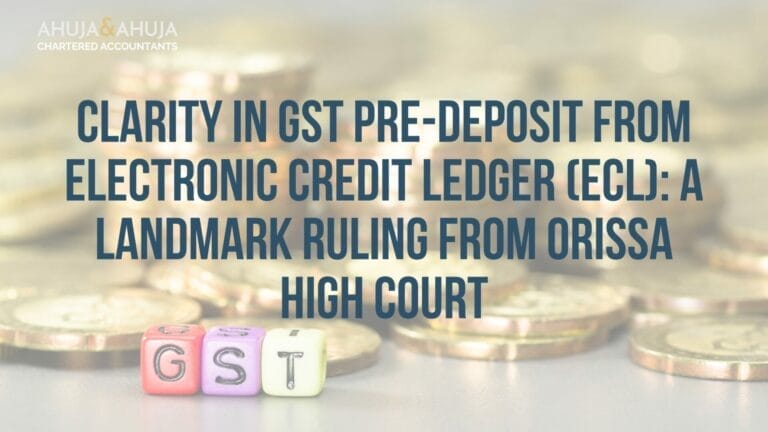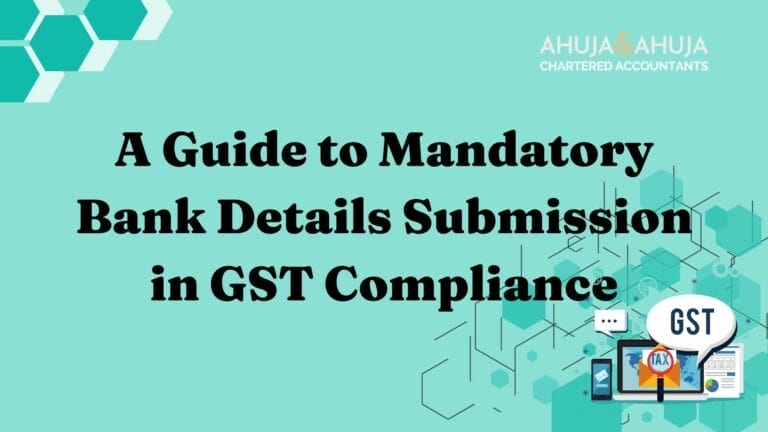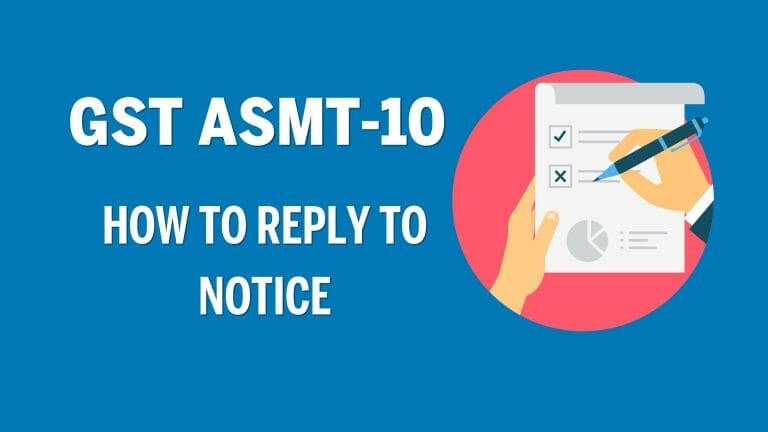Tax Collection at Source (TCS) under GST A Comprehensive Guide
Making head or tail of the myriad tax laws in India can sometimes feel like deciphering an intricate puzzle. It’s essential, especially for e-commerce operators, to demystify these rules to ensure seamless transactions and maintain regulatory compliance on all fronts. Among the different aspects of taxation, the Tax Collected at Source (TCS) under the Goods and Services Tax (GST) often raises several questions. This guide aims to unravel these complexities and present a comprehensive understanding of TCS under GST.
Understanding TCS under GST
Tax Collected at Source (TCS) is a mechanism where the ecommerce operator, colloquially called the “collector”, collects tax from the “seller” or “supplier” at a specified rate. Introduced under Section 52 of the CGST Act, TCS ideally applies when the supplier sells goods or services through the ecommerce operator’s platform and the said operator collects payment on behalf of the supplier.
At the heart of the process is the e-commerce operator, which typically provides a platform for the supplier’s goods or services. The amount collected as TCS is shaved off the gross amount payable to the supplier, and the balance amount is paid out. Essentially, TCS functions as a tax obligation on the part of the ecommerce operator, enabling better tracking of transactions and ensuring that suppliers are GST compliant.
For businesses unfamiliar with GST procedures, consulting GST registration services or seeking advice from a GST consultancy will provide a better understanding of the intricate processes, such as TCS, involved with GST administration.
Liability of TCS under GST
Determining who is liable to collect TCS under GST is an essential step in understanding the practical implications of this tax mechanism. Certain operators who own, operate, and manage e-commerce platforms fall under the ambit of TCS. However, TCS applies only if these operators collect consideration from customers on behalf of the vendors or suppliers. In simpler terms, when e-commerce operators pay the consideration collected to the vendors, they are required to deduct an amount as TCS and remit the net amount to the vendor.
It’s important to note that there are a few exceptions to the TCS provisions for services provided by e-commerce platforms. These exceptions include hotel accommodation/clubs (unregistered suppliers), transportation of passengers (e.g., radio taxi, motor cab, or motorcycle), and housekeeping services like plumbing or carpentry (unregistered suppliers).
To better illustrate the application of TCS, let’s consider an example. Imagine M/s.XYZ Stores, a proprietorship, is selling garments through Flipkart, an e-commerce operator. As Flipkart collects the consideration on behalf of XYZ Stores, Flipkart becomes liable to deduct TCS before making the payment to XYZ Stores.
For a comprehensive understanding of the GST and TCS registration requirements, consulting with GST litigation services or GST return filing services can provide valuable guidance.
When does the liability of collecting TCS arise?
The liability for collecting TCS under GST arises for e-commerce operators at the time of making a payment to the vendor. This payment represents the consideration collected on behalf of the vendor for the supplies made through the online platform. The tax is collected on the net value of taxable supplies, which accounts for the total value of supplies minus any taxable supplies returned to the suppliers through the e-commerce operator.
It’s crucial to understand the rate applicable under TCS to ensure accurate deduction. As per the notification by the Central Board of Indirect Taxes and Customs (CBIC), the rate of TCS has been set at 1%. This rate is divided into 0.5% for CGST (Central Goods and Services Tax) and 0.5% for SGST (State Goods and Services Tax). For transactions between states, the rate will be 1% under the IGST (Integrated Goods and Services Tax) Act.
To ensure compliance and avoid penalties, e-commerce operators must register under GST. Unlike regular taxpayers, no threshold exemption is provided for TCS liability. Additionally, suppliers selling goods through e-commerce platforms are also required to get registered under GST, except for a few exceptions mentioned earlier.
Understanding the registration requirements can be complex, so seeking guidance from GST services providers can streamline the process. Consultation with GST registration services can help e-commerce operators and suppliers navigate the intricacies of registration.
Due date for depositing TCS
Once the liability for TCS is determined, the deduction is made during the month in which the supply is made. The TCS amount should be deposited within 10 days from the end of the month of supply to the credit of the government. This ensures timely compliance and avoids any penalties or interest charges.
The payment of tax collected under TCS is distributed in the following manner:
- The Integrated Goods and Services Tax (IGST) and Central Goods and Services Tax (CGST) components are paid to the central government.
- The State Goods and Services Tax (SGST) component is paid to the respective state governments.
Efficient management of TCS payment ensures seamless compliance with GST regulations and prevents any financial implications.
How to compute the taxable value of supplies for TCS
To determine the taxable value for the collection of TCS, the “Net Value of Taxable Supplies” is considered. This value is calculated as:
Total value of taxable supplies of goods and/or services (excluding notified services under the GST law by all registered persons)
Minus: Taxable supplies returned to the suppliers through the e-commerce operator
Equals: Net value of Taxable Supplies
For example, let’s say M/s.XYZ Ltd, a registered supplier, supplies goods through an e-commerce operator. In the month of September 2018, M/s.XYZ Ltd made supplies worth Rs. 55,00,000. However, goods worth Rs. 5,00,000 were returned to them during the same month. In this case, the net value of taxable supplies for TCS collection would be Rs. 50,00,000, and TCS at the rate of 1% (Rs. 50,000) would be deducted by the e-commerce operator. The final payment to be made to the supplier would be Rs. 49,50,000.
Calculating the taxable value accurately ensures compliance with TCS regulations and prevents any discrepancies in the TCS amount collected.
Filing TCS Returns: Form GSTR-8
E-commerce operators are required to file their TCS returns using Form GSTR-8. This form should be filed by the 10th day of the month following the collection of TCS. It is important to note that the return can only be filed once the TCS amount has been deposited to the respective government authorities. For instance, if TCS is collected in December 2021, the due date for filing GSTR-8 would be on 10th January 2022.
The details submitted by the e-commerce operators in the GSTR-8 return are made available to all the suppliers through their GSTR-2A. Suppliers can access the details of supplies made via the e-commerce operator’s platform once the due date for filing GSTR-8 has passed. It is important for suppliers to match and reconcile the supplies with the details in GSTR-2A in order to claim the input tax credit accurately.
However, it is important to note that the credit details available in GSTR-2A will not be reflected in GSTR-2B return. The tax collected by the e-commerce operator will be reflected in the electronic cash ledger of the suppliers. Suppliers can claim this credit after reconciling their supplies with the details in GSTR-2A.
Any discrepancies found during the reconciliation process will be communicated to both the e-commerce operator and the supplier. If the discrepancy is not rectified within the given time period, the tax amount will be added to the liability of the supplier, who will need to pay the difference along with any applicable interest.
Impact of e-Invoicing on TCS and E-commerce Operators
The e-invoicing system has had an impact on TCS and e-commerce operators under GST as well. E-commerce operators can utilize the e-invoicing system to report invoices raised on behalf of online suppliers to the Invoice Registration Portal (IRP). This integration enables smoother and more efficient management of invoices while ensuring compliance with the e-invoicing requirements.
To effectively integrate their ERP system with the IRP, e-commerce operators follow a detailed procedure within the IRP sandbox. This integration allows the seamless generation and reporting of e-invoices in line with the IRP guidelines.
Implications of TCS Provisions under GST
From the perspective of e-commerce operators, it is important to register under GST in all the states where they operate before the implementation date of the TCS provisions. Ensuring robust integration of ERP systems is imperative for the smooth application of these provisions in day-to-day business operations.
For suppliers selling through an e-commerce platform, the TCS provisions have an impact on working capital. Excess taxes paid can block SME vendors from selling goods or supplying services on online portals until they file their returns and claim the appropriate credits. It also ensures that tax evasion is significantly reduced, as taxes are collected at each transaction through the TCS mechanism.
Conclusion
Understanding Tax Collection at Source (TCS) under GST is essential for e-commerce operators and suppliers to ensure compliance with the law and avoid penalties. By grasping the liability of TCS, the applicable rates, registration requirements, due dates, and filing processes, businesses can streamline their operations and maintain smooth transactions within the bounds of the GST framework.
This comprehensive guide has provided insights into TCS under GST, bolstered by examples and contextual explanations. To navigate the intricacies of TCS and other GST-related matters, consulting with GST service providers can offer valuable expertise and assistance.
By staying informed and adhering to the guidelines and regulations, businesses can harness the benefits of the GST system while contributing to a robust and transparent taxation framework in India.
Disclaimer
The materials provided herein are solely for educational and informational purposes. No attorney/professional-client relationship is created when you access or use the site or the materials. The information presented on this site does not constitute legal or professional advice and should not be relied upon for such purposes or used as a substitute for professional or legal advice.







